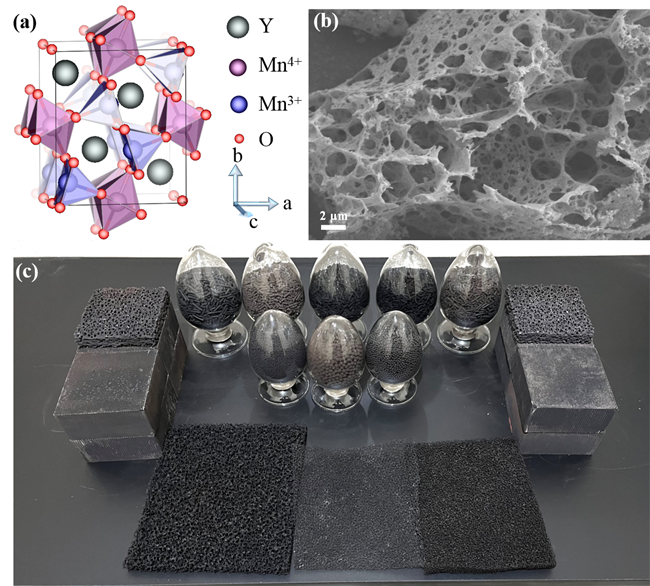NKU Team Made New Progress in Ultra-Low Temperature Treatment of Ozone Pollutants
The research group led by Prof. Wang Weichao of the College of Electronic Information and Optical Engineering, Nankai University, for the first time realized ultra-low temperature (-40℃ - room temperature) ozonolysis with zero energy consumption on the ternary oxide catalyst mullite YMn2O5. The application of this achievement will provide technical support for the decomposition of new atmospheric pollutant ozone in ultra-low temperature environment, and play a role in such fields as commercial aviation. The paper introducing the achievement was recently published in Environmental Science & Technology, an international academic journal.
According to the findings of the research, thanks to the unique symmetrical structure of mullite as well as the mn-O bonding strength with suitable surface, YMn2O5 can efficiently decompose ozone into oxygen at extremely low transition state barrier (0.29 eV), and maintain stability for a long time (100h) at high concentrations (120 ppm), high space velocity (600,000 mL·g-1·h-1), ultra-low temperature (-40℃ - room temperature), and high humidity (RH=90%).

Figure 1. YMn2O5 efficiently catalyzes the decomposition of high-concentration ozone into oxygen, and maintain stability for a long time at ultra-low temperature (a) and high humidity (b, c) environment. (120ppm O3/Air, mass space velocity WHSV=600,000mL·g-1·h-1, RH: relative humidity).

Figure 2. (a) mullite unit cell, (b) scanning electron microscopy image of synthetic powder and (c) some industrial products based on mullite catalytic materials
Starting from 2019, Prof. Wang Weichao's research group made plans for the zero energy decomposition of ozone based on mullite catalytic materials. At present, the team has achieved the large-scale preparation of the material, which can meet the needs of different industrial applications. It is expected that mullite catalysts provide necessary technical support for the decomposition of ozone, an atmospheric pollutant at present, in the context of the "dual carbon" goals.
The first authors of the paper are Wan Xiang and Wang Lijing, doctoral students of the College of Electronic Information and Optical Engineering, Nankai University. Prof. Wang Weichao is the corresponding author.
Link: https://pubs.acs.org/doi/10.1021/acs.est.1c08922
(Edited and translated by Nankai News Team)









